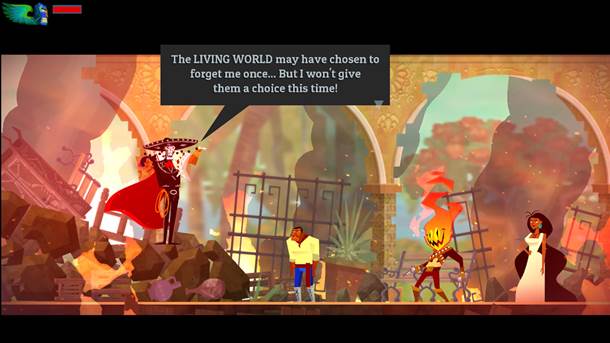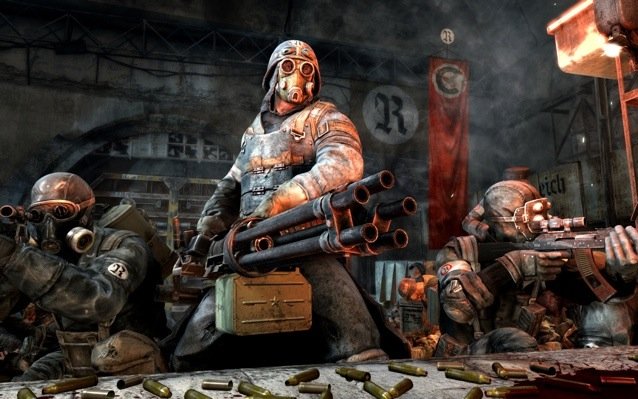

Sonic Colors suffers from some serious bi-polar disorder – when it’s in a good mood, it really loves you, but when it’s in a bad mood, it hates your damn guts. In its happier moments, which outnumber the unhappy moments, the level design is a wonder of flowing ramps and corkscrews, of sprawling multi-tiered stages offering numerous avenues to explore. When it’s feeling cranky, it’s full of cruelly-placed enemies designed to interrupt your blissful speedy trajectory and horrifically cheap deaths that throw you all the way back to the beginning of a stage.
Sonic Colors, as befits its name, is a gorgeous game. Forget about limitations of the Wii: this game just flat-out stuns with its huge backdrops, shiny platforms coated in a delicious candy-gloss, and of course, its palette of glittering colors. It takes place in an orbital amusement park, and while the world map looks like an embarrassing copy of Mario Galaxy, the actual levels are very much Sonic. There are two main types of gameplay, often alternated within a single level: side-scrolling 2D racing and platforming, and a head-on running perspective that focuses mostly on just racing. There’s a nice mix of the two perspectives, with a bit more emphasis on 2D, which fans will probably prefer.
The colors aren’t just a reference to the game’s aesthetic, but also call out one of its best elements: powerups that transform Sonic into brightly-colored alien shapes. Sonic can become a cyan laser and reflect through certain crystals or antennae, or change into a yellow drill and plumb the depths beneath the surface of the world (our favorite), or become a pink ball of spikes and traverse any wall or ceiling. At first, the frequency and variety of these powerups is limited, but as you complete levels and discover new forms, these powerups populate previously played levels, opening up new avenues for exploration.
Despite having a very casual-friendly sounding title and appearing on the casual-friendly Wii, Colors is actually a hardcore game. Even the very first level killed us early on repeatedly and we faced a game over screen, earning our respect. True to its bi-polar nature, though, Colors bounces back and forth between incredibly easy and super difficult – but leans more toward difficult. During speedy sections, the game often requires lightning reflexes. During slower platforming parts, absolutely perfect jumps onto tiny ledges are common. Many times, the difficult parts feel fair – they just ask skill of the player. Many other times, however, the game throws cheap-ass deaths at you, and these scenarios increase with alarming frequency toward the end of the game.
At one point in the game, we got to a section right at the end of a level where this crab creature driving a giant, floating robot chases you along a stretch of roadway. It promptly smacked the rings out of us, and then followed up with a death-smack. This repeated four times in a row until we got a game over. We couldn’t figure out how to avoid the attacks. Sadly, with a game over comes getting thrown back to the beginning of a level. No problem, we worked our way back to the crab-robot thing… and swiftly died four times in a row again. At this point, the game offered to turn on the Navigator for us. We meant to choose “no” but accidently hit “yes” – oh well, at least we would get past this annoying section.
So, we get to the crab-robot again. Now the Navigator informs us we must press B, which activates Sonic’s dash. All righty! We press B. The robot hits us anyway. Uh, what? Now the Navigator tells us to move from side to side. We do so. Smack. Dead. Four times in a row, dead, and back to the beginning of the level. This happened over and over until we lost count. Turns out we had to hold the B button down for an arbitrary amount of time, even though a single tap of the button caused the prompt to disappear and triggered the next prompt (move side-to-side) which was in fact completely incorrect for the situation at hand. See, the side-to-side prompt is supposed to tell you what to do after successfully completing the dash, but just triggers anyway regardless of what happens. So we did what the game told us to do, and died over and over.
This is what we were talking about when we said sometimes Sonic Colors hates your guts. After the traumatic crab-robot, the game gets in a worse mood and throws the same robot at you again, except this time with no checkpoints so if you die during an even longer chase sequence, you go minutes back to the beginning every time. It’s utterly infuriating. Strangely, most of the bosses in the game are big pushovers, requiring minimal effort or skill.
For gamers with a low frustration threshold, Sonic Colors is a spiky, uncomfortable hedgehog to swallow. It lulls you with super forgiving gameplay and then slaps you in the face with totally unfair, unforgiving moments. If you’re a Sonic fan whose favorite aspects of the blue blur are his speed and agility, you’ll encounter some exhilarating swoops, jumps, and zigzags, but at the same time you’ll find tons of obstacles to stop your crazy speeding in its tracks. The gamers who will get the most out of Sonic Colors are the patient explorers.
As long as you don’t care about perfect flow of play, don’t get frustrated by repeated bounces back to a stage’s beginning, and want to just have fun exploring, Sonic Colors will probably be great for you. Every stage has multiple pathways and hidden passages to discover. There are the ubiquitous gold rings, but there are also the harder to find red rings, which unlock levels in the Sonic Simulator, a kind of pared-down arcade version of the game.
Even for those, like us, who experienced reams of frustration as the game approached its conclusion, something unexpected and really cool happens after finishing the game: it becomes more fun. We mentioned before how certain powerups become unlocked and available in previous levels. Well this isn’t just a minor bonus toy to play with once you’ve finished the game. These powerups open areas of levels completely inaccessible before – and some of them are huge. So the game becomes more than a speedy platformer after you complete it – it becomes an exploration adventure. It makes levels that drove us crazy the first time around into playgrounds and archeological digs. It’s a feature that elevates that game significantly above our initial feelings about it (which frankly weren’t very positive).
So when it comes down to it, Sonic Colors is a pretty good game after all considerations. It both loves and hates the player, and this degree of love or hate depends on the type of player. Some could find its frustrations unforgiveable, while others will delight in its cornucopia of exploratory offerings. Those who love Sonic, or have really wanted to love him since his descent into mediocrity, likely won’t regret giving Colors a chance – but be prepared to muster some patience.
Nov 9, 2010




 Social Empires Guide
Social Empires Guide Metro Last Light Faction Pack DLC Review – A Small But Worthwhile Package
Metro Last Light Faction Pack DLC Review – A Small But Worthwhile Package PES 2014 Review
PES 2014 Review Fallout 4: Tales of a Junktown Jerky Vendor Magazine Locations
Fallout 4: Tales of a Junktown Jerky Vendor Magazine Locations A Sum of Parts: Murder Simulators
A Sum of Parts: Murder Simulators